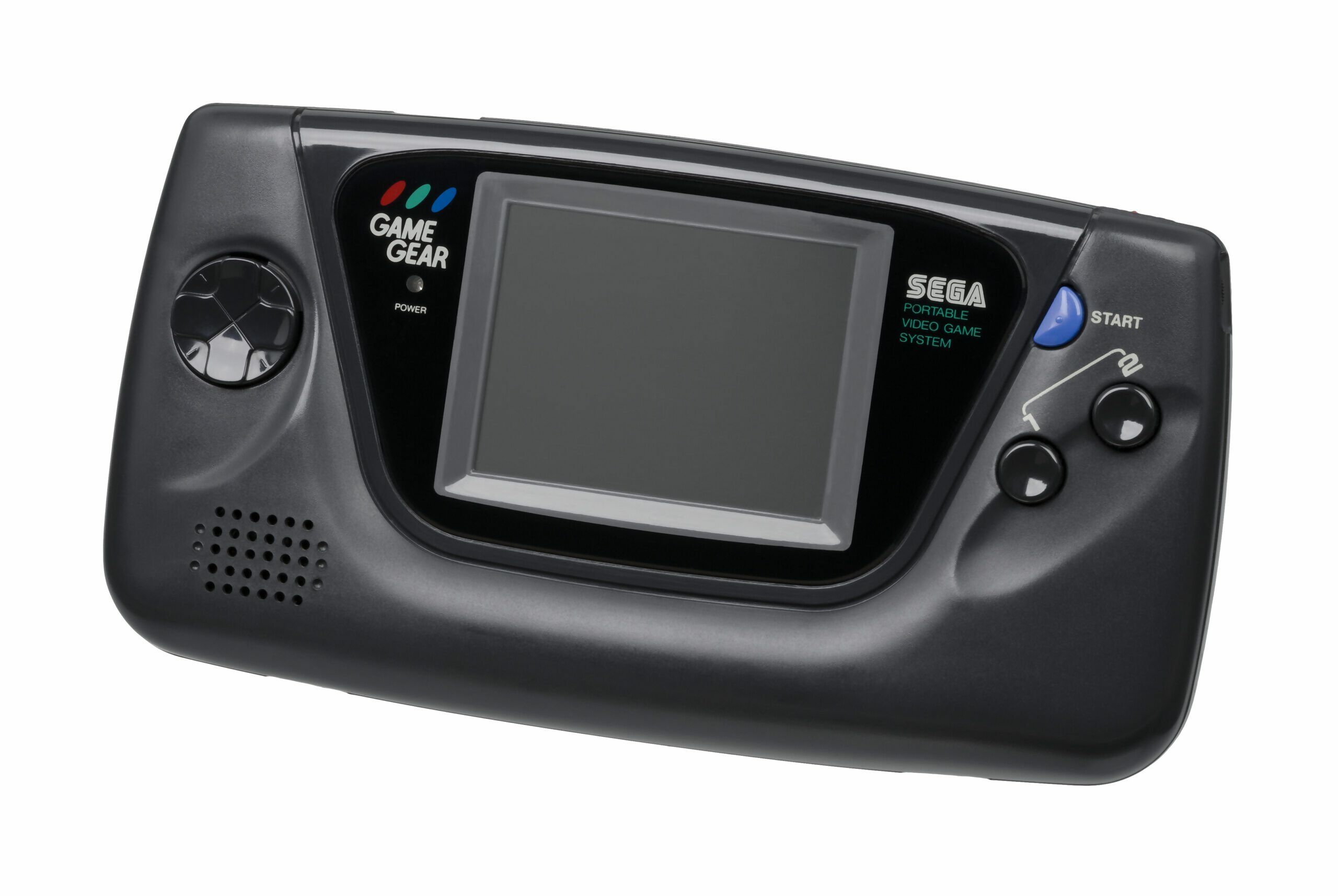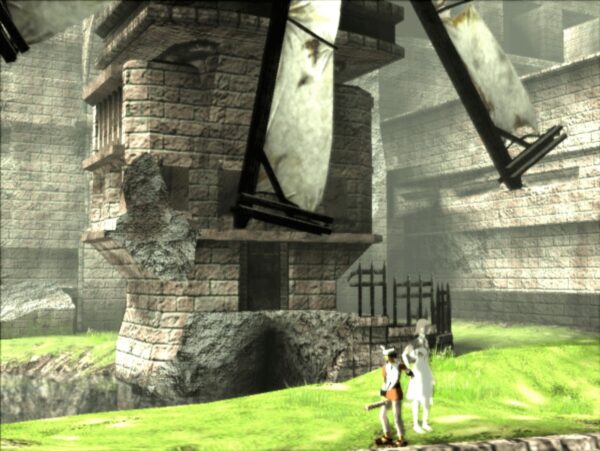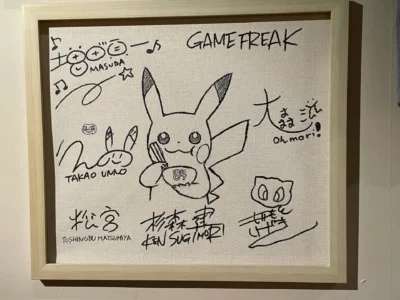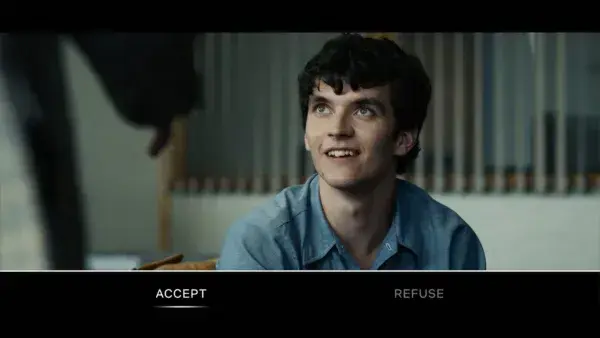
Read enough material about the Game Gear, Sega’s nineties handheld console, and you’ll find the same sentiments tend to crop up: its battery life was dismally short. It had a colour screen, but it was low-contrast and blurred a lot when things like bullets or blue hedgehogs moved around too quickly. And compared to its rival, Nintendo’s Game Boy, the Game Gear was generally regarded as a bit of a damp squib – a chunkier, costlier device that lacked the charisma, extensive library, and portability of its competitor.
Look beyond the accepted wisdom, though, and there’s a bit more going on with Sega’s device. For one thing, its launch was far from a disaster. Following its Japanese release in October 1990, the Game Gear was officially supported by Sega until spring 1997 – hardly the sign of a commercial flop. (The Dreamcast, for the sake of comparison, had a lifespan of just three years.) Reliable sales figures are difficult to track down almost 30 years on, but Sega’s then-president Hideki Sato regarded the Game Gear as at least a moderate success; interviewed in 1998, he claimed that the handheld sold somewhere in the region of 14 million systems worldwide, which he described as “a respectable chunk of market share.”
The Game Gear’s hardware also makes more sense when viewed in its early nineties context. Nintendo had essentially owned the handheld market for a decade by 1990, thanks to the success of its Game & Watch series and its first proper console, the Game Boy, released in 1989. As a response to the monochrome, compact, and affordable Game Boy, Sega attempted to make a system capable of replicating some of the colour and attitude of its arcade games.
Components such as a 3.5MHz Z80 processor (identical to Sega’s Master System) and backlit colour screen meant that it could run decent renditions of games like OutRun, Streets of Rage, and Sonic the Hedgehog. That processing power came at a cost: the Game Gear could easily drain its six AA batteries in three hours or less. Devices like A/C adaptors, battery packs, and car chargers sidestepped this issue, but still made the device less portable than the svelte Game Boy. (In some respects, though, the Game Gear’s heft worked in its favour: the device felt comfortable in the hands, and the placement of the D-pad and buttons on either side of the screen felt natural, even after extended periods.)

Miniaturised ports of Sega’s big hitters – such as Streets of Rage – added to the Game Gear’s initial appeal.
In the first couple of years after its launch, the Game Gear soon built up a respectable library of games, ranging from ports of those arcade hits mentioned above, to a decent selection of system exclusives, some of which you’ll find listed overleaf. The Game Gear’s hardware commonalities with the Master System also meant that it could run that system’s games through a cartridge converter.
Despite some aggressive marketing, however, the Game Gear spent the nineties eclipsed by bigger events, whether it was the storming success of the Game Boy, or the headline-grabbing war between Sega’s Mega Drive and its arch-rival, the Super Nintendo. Out of all the other pretenders to the handheld crown, though – whether it was Atari’s even bulkier Lynx, released in 1989, or the tawdry Gamate, which dribbled out of Taiwan the year afterwards – the Game Gear at least made a dent in the market. The Game Gear was always something of an underdog, but thanks to its curvy nineties styling and an underrated roster of games, it undoubtedly remains a likeable one.

Some of Sega’s ‘edgy’ advertising from the nineties – like this one, which takes aim at the Game Boy – hasn’t aged well.
Rare beasts
The Game Gear was dark grey as standard, but it survived long enough to get a surprisingly wide range of colour variants and special editions. Some of these – including a blue ‘Sega Sports’ variant – came out in North America, but most of the more interesting ones came out exclusively in Japan. A branded red edition, bundled with a copy of the RPG Magic Knight Rayearth, for example, came out in 1994. Later in its life, Sega renamed the handheld the Kid’s Gear, and launched a particularly jazzy Virtua Fighter Mini-themed edition. Featuring a graphic of series regular Akira Yuki splashed across the case, it was arguably the liveliest Game Gear ever released – and today, one of the rarest on the second-hand market.

Sega stopped making the Game Gear in 1997, but Majesco Entertainment kept the console going for another three years.
Play Today
Ageing, faulty capacitors mean it’s getting increasingly difficult to find an original Game Gear in full working order, but if you want to play the system’s games in 2020, then it’s possible to get an existing handheld fitted with new capacitors and a modern LCD screen. McWill make an excellent replacement kit that both massively improves on the original system’s blurry display and also reduces its battery consumption. If you’re confident with a soldering iron, it’s a modification you can do yourself – kits can be purchased for about £100 from online stores like dragonbox.de – though you’ll also find refurbished Game Gears available on eBay for around £150–£200.
Alternatively, there’s also the Game Gear Micro: due out in October 2020, these dinky replicas of Sega’s handheld will set you back around £40 on release, will come in four colours (black, blue, red, yellow), and each will include four games unique to that colour. The Micro’s a fun bit of nostalgia, but with a screen measuring about 25mm across, we’re unlikely to be playing on one for a few minutes at a time.

We’re guessing this one won’t eat batteries. It’s the Game Gear Micro.
Top Gear
Some exclusive Sega Game Gear corkers still worth playing today…
Popils, 1991

This fixed-screen puzzler, which involves shifting blocks to guide the male hero to the trapped heroine (well, it was the nineties) is perfect handheld fodder, and a pleasurable way of spending a few hours. There’s a poignant story behind it too: this was the last game from the eminent Fukio Mitsuji, designer of the classic Bubble Bobble.
Ganbare Gorby!, 1991

All games are a product of their time, but this action-puzzler could only have come from the late Cold War era. It stars Soviet leader Mikhail Gorbachev, and his job is to hit switches and ensure that his factory’s conveyor belts keep churning out food and supplies to a hungry populace. Deeply strange, but also fun. Emerged in the west (sans Gorby) as Factory Panic.
Fantasy Zone, 1991

Contemporary gripes that the vibrant colours made bullets hard to spot were valid, but this handheld adaptation of Sega’s shooter series looks superb on a modded Game Gear. Now free from unsightly motion blur, its psychedelic backdrops no longer mask the various projectiles and whimsical enemies zipping around the screen.
GG Aleste, 1991

Arguably the best shooter on the Game Gear, Compile’s miniaturised spin-off from its main series is frenetic and packed with cracking tunes. A low production run makes this a rare item; its sequel was actually released in Europe as Power Strike II – a little cheaper to buy, and also a corking handheld blaster. If you pick up either one, you’re in for a good time.
Berlin Wall, 1991

Another product of the Cold War era, this obscure Space Panic clone has little to do with late 20th century Germany. Instead, it’s a jolly little platformer about a Japanese school kid (with a natty yellow hat) who wreaks havoc in a fantasy world by digging holes, and trapping enemies in said holes, before beating them to death with a hammer. One of a handful of Game Gear titles that has a two-player co-op mode.
Halley Wars, 1991

This Taito shooter – adapted from its own obscure coin-op – is pretty austere compared to GG Aleste, but it has one cool idea: the more invading enemies you let past you, the more damage the Earth will receive. It gives the player an actual in-world reason to kill everything they see, beyond simply racking up a high score, and manages to make you feel a bit bad for failing.
Ninja Gaiden, 1991

Its name might imply that it’s a straight port, but this edition of Ninja Gaiden is different from its popular NES counterpart. The platforming action and blue-clad ninja protagonist are immediately recognisable, but the level designs and tunes are completely new. It’s short and far easier than the NES version, but it’s still a fascinating, overlooked entry in the series.
Shinobi II: The Silent Fury, 1992

Far from cut-down versions of their big console brethren, the Shinobis on GG introduced new ideas, including a Mega Man-esque concept of ‘rescuing’ ninjas from each level, which you can then switch between to take advantage of their powers of grappling, levitation, and so forth. A truly underrated pair of platformers.
Ristar, 1995

Very different from its better-known Sega Mega Drive counterpart, this mascot platformer is actually a lot better than the Sonic the Hedgehog adaptations and spin-offs that appeared on the Game Gear. Sadly, despite some decent reviews, this sprightly platformer arrived near the end of the console’s life, and barely got a ripple of attention as a result.
Sylvan Tale, 1995

Very much a Zelda clone, but the Japan-only Sylvan Tale is a superbly made one, and a fine addition to the Game Gear’s library, which isn’t exactly full of titles in this mould. The staples of exploring overworlds and puzzling your way through monster/trap-filled dungeons are here, but it’s all done with such charm and polish that speedrunners are still grappling with it today.





